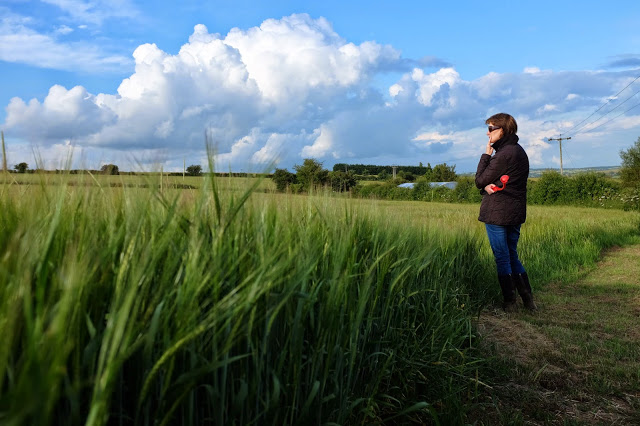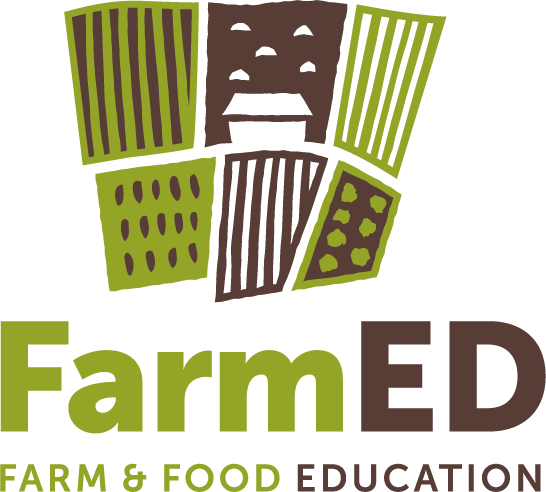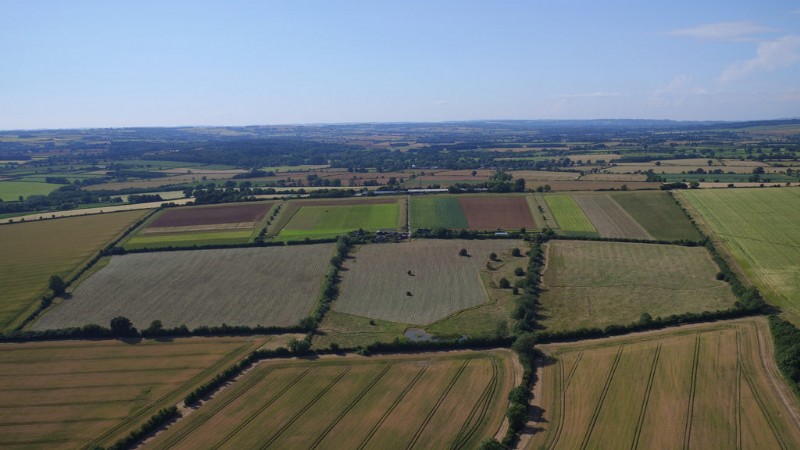Perhaps the most significant thing that’s happened this month is that we’ve received the results of the bird and mammal survey from ecologist Dr Richard Broughton from the Centre for Ecology and Hydrology, following his visits to Honeydale earlier this year.
The main aim of the survey was to collect baseline information on the breeding bird community of Honeydale Farm. A secondary aim was to record any mammal species and activity where possible, through observation of animals, tracks and signs. The scientific report, which extends to 30 pages including mapping, makes fascinating reading. Here are the summary points and highlights:
The bird community of Honeydale Farm is rich and diverse, with a total of 44 species recorded. Of these, at least 24 species were found breeding on site, 9 of which are of conservation interest as nationally declining species.
For its size, the farm has particularly good populations of three bird species which are of conservation priority, having undergone serious national declines in recent decades: Yellowhammer, Linnet and Skylark. These are the most important aspect of the birdlife on the farm.
At least five (and possibly seven) bird species used the farm buildings for nesting: Swallow, Collared Dove, House Sparrow, Great Tit, Pied Wagtail (and possibly Wren and Blackbird).
Of the mammals, six medium-large species were recorded: Roe Deer, Muntjac Deer, Fox, Badger, Brown Hare and Rabbit. A further three species of small mammal were recorded (Common Shrew, Bank Vole, Mole), although the survey was not geared to sampling the small mammals, and other species almost certainly occur on site. Grass Snake was also recorded.
Good numbers of Brown Hares are present on the farm, mostly in the barley fields, and as a declining species these are the most valuable aspect of the larger mammal biodiversity.
There is some excellent habitat for farmland birds and mammals on the farm, including impressive ancient hedgerows and the unimproved grassland of the rich and beautiful meadow field, and the close proximity of juxtaposing habitats underpins much of the birdlife.
Some enhancements are possible, such as targeted nestboxes or agri-environment options (field margins and plots), although maintaining some of the existing key habitat features are likely the most important efforts that can be made to securing the bird and mammal conservation interest of the farm.
Sheep-Shearing

The 70 ewes were sheared on one very hot afternoon. The flock of commercial sheep belongs to the Adams family who run a traditional mixed farm in Leafield. Son Ed and his friend Ollie Coster took charge of the shearing while father, Nigel, pushed the sheep into the shearing pen and our Sam rolled out the fleeces and put them into woolsacks. The wool is now on its way to a central depot, from there it will be marketed by the British Wool marketing Board which coordinates the collection and sale of wool from registered producers.
It was heartening to hear from Nigel that the lambs are doing really well on the permanent grass at Honeydale. Just imagine the results we will get when some proper mixtures are sown!.
Orchids in the Hay Meadow

The Hay Meadow at Honeydale is permanent, low input unimproved grassland which is currently part of an Environmentally Sensitive Area Scheme (ESA). Initially, when we first bought the farm, the meadow was filled with grasses and as winter turned to spring cowslips, lady’s smock, red clover and meadow buttercup came into flower. Jim, the farmer, had told us that there were orchids in the field but it’s been a lovely surprise to see so many, literally hundreds of Pyramidal Orchids and Bee Orchids.
We even found some sainfoin and now we see field scabious and lesser knapweed too. We’re considering introducing more species into the sward by over seeding to further enhance it.
Barley
Another surprise was the wild oats popping up in our 60 acres of barley. In time-honoured fashion we’ve hand rouged the majority of the area. The team included, Mike, Mac and Mark from our warehouse together with 16 year old Lewis who is on work experience with us. Hopefully it’s not put him off farming!

Malting barley has been grown at Honeydale for many years and as part of our policy of observing the land for twelve months before making any significant changes, we sowed the same this year. It is now fully out in ear and starting to turn in time for us to harvest in the middle of August. We’re fortunate to be able to work with the Swinbrook Estate, which also grow malting barley, giving us access to machinery and combine harvester which we don’t have on our small farm.








